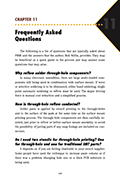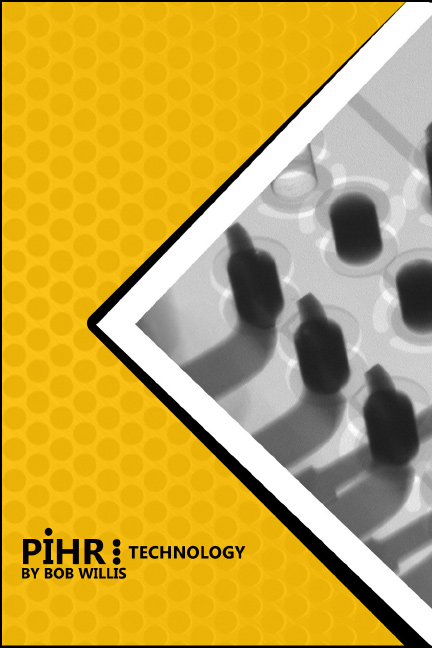Reflow soldering of through hole components can simplify the entire assembly process for companies running tin/lead or lead-free and continue to maintain the quality and reliability of the products being built.
The reflow-only process can also eliminate the cost and waste associated with wave and selective soldering.
By eliminating two processes, floor space and energy costs can be reduced--a definite advantage to the end user.
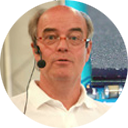 Bob Willis currently operates a training and consultancy business based in England. Bob is a member of the SMART Group Technical Committee. Although a specialist for companies implementing surface mount and area array technology Mr. Willis has provided training and consultancy in most areas of electronic manufacture for over 30 years.
Bob Willis currently operates a training and consultancy business based in England. Bob is a member of the SMART Group Technical Committee. Although a specialist for companies implementing surface mount and area array technology Mr. Willis has provided training and consultancy in most areas of electronic manufacture for over 30 years.
Bob has conducted workshops and set up production lines, assembly features and his “NPL Process Advice and Defect Clinic” with all the major organizations and exhibition organizers worldwide like Productronica, Germany, IPC APEX, SMTAI in the USA plus National Electronics Week and Nepcon Electronics in the UK.
Bob has travelled in the United States, Japan, China, New Zealand, Australia, South Africa, Russia and the Far East consulting and lecturing on electronic assembly. He was presented with the Paul Eisler Award by the ICT (Institute of Circuit Technology) for the best technical paper during their technical programs. Bob organizes the NPL Defects Database on behalf of NPL and organizes the Electronics Interconnection Division’s monthly online technology webinars and on-site workshops. He has authored two books in the last couple of years on Pin In Hole Intrusive, Design & Assembly plus Package On Package Design Assembly & Quality Control which has been read by over 2000 engineers from around the world.
Chapter Summaries
-
Chapter 1
Pin In Hole Reflow PCB Design Guidelines
Chapter 1 explores all the factors, guidelines and specifications to consider when designing for Pin in Hole Reflow.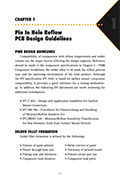
-
Chapter 2
PIHR Component Guidelines
Chapter 2 talks about specific PiHR component guidelines including laminate types, solder mask, surface finish and hole and pad sizes.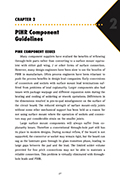
-
Chapter 3
Solder Paste Application Methods
Solder paste volume is critical to successful PIHR. The stencil technology and the design rules are a critical factor to consider when implementing this process. Successful implementation starts at the design stage by looking at correct component selection; component body design is a key factor in the printing process.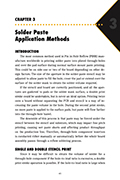
-
Chapter 4
Automatic and Manual Component Placement
Topics include assessment of components, vision alignment, component handling and component packaging.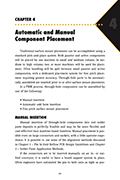
-
Chapter 5
Reflow Soldering
This chapter explores how through-hole reflow can be successfully conducted by convection or vapor-phase soldering with either tin/lead or lead-free alloys.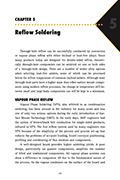
-
Chapter 6
Temperature Profiling for Pin in Paste Reflow
How to properly create a temperature profile for through-hole parts, which normally have a higher mass and are more difficult to profile.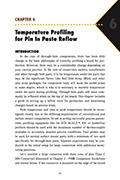
-
Chapter 7
Solder Joint Inspection and Quality Control
Techniques for ensuring that through-hole solder joints produced by intrusive reflow are as reliable as those created using wave, selective or manual soldering.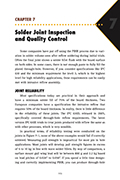
-
Chapter 8
Reliability of Through-Hole Reflow
This chapter explore the range of different tests that can be conducted on through hole parts to assess their solder joint reliability with both tin/lead and lead-free alloys.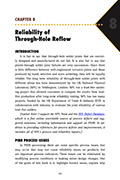
-
Chapter 9
PIHR Manufacturing Defects—Causes and Cures
This chapter will provide examples of each of the common process problems and solutions associated with PIHR.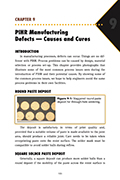
-
Chapter 10
Suggested PIHR Resources
Chapter 10 provides a complete listing of the papers and references that are available for future research.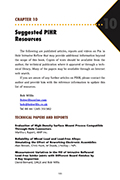
-
Chapter 11
Frequently Asked Questions
Chapter 11 contains a list of typically asked questions on PIHR and the answers often provided.